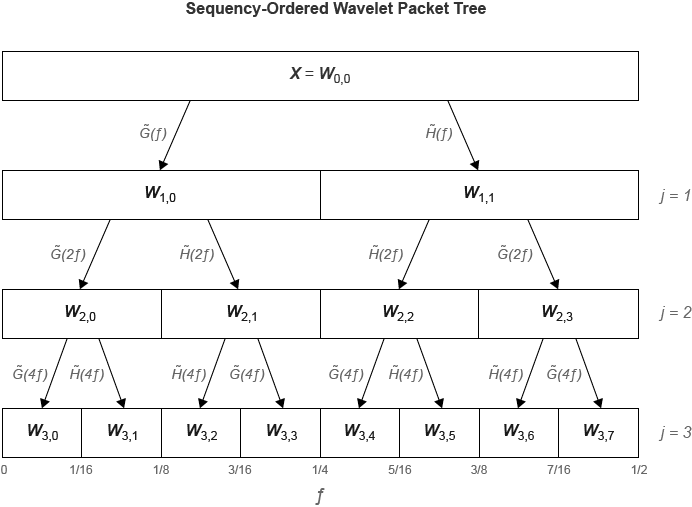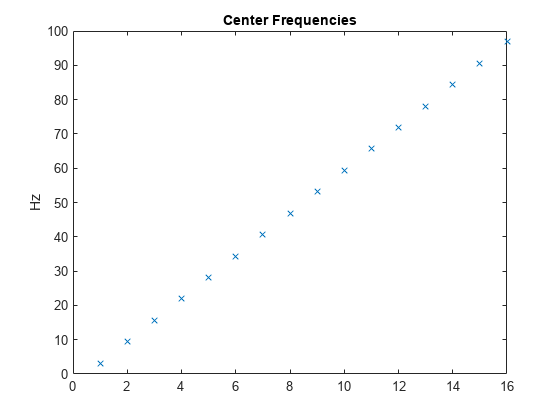dwpt
Wavelet packet 1-D transform
Syntax
Description
wpt = dwpt(X)X. The input X is a vector, matrix, or
timetable. By default, the fk18 wavelet is used, and the decomposition
level is floor(log2(Ns)), where
Ns is the number of data samples. The wavelet packet transform
wpt is a 1-by-N cell array, where
N =
2^floor(log2(Ns)).
[
also returns the transform levels of the nodes of wpt,l,packetlevels] = dwpt(___)wpt using any of the
previous syntaxes.
[
also returns the center frequencies of the approximate passbands in cycles per sample using
any of the previous syntaxes.wpt,l,packetlevels,f] = dwpt(___)
[
also returns the relative energy for the wavelet packets in wpt,l,packetlevels,f,re] = dwpt(___)wpt using
any of the previous syntaxes. The relative energy is the proportion of energy contained in
each wavelet packet by level.
[___] = dwpt(___,
specifies options using name-value pair arguments in addition to the input arguments in the
previous syntaxes. For example, Name=Value)Level=4 specifies the decomposition
level.
Examples
Input Arguments
Name-Value Arguments
Output Arguments
More About
Algorithms
The dwpt function performs a discrete wavelet packet transform and
produces a sequency-ordered wavelet packet tree. Compare the sequency-ordered and normal
(Paley)-ordered trees. is the scaling (lowpass) analysis filter, and represents the wavelet (highpass) analysis filter. The labels at the bottom
show the partition of the frequency axis [0, ½].


References
[1] Wickerhauser, Mladen Victor. Adapted Wavelet Analysis from Theory to Software. Wellesley, MA: A.K. Peters, 1994.
[2] Percival, D. B., and A. T. Walden. Wavelet Methods for Time Series Analysis. Cambridge, UK: Cambridge University Press, 2000.
[3] Mesa, Hector. “Adapted Wavelets for Pattern Detection.” In Progress in Pattern Recognition, Image Analysis and Applications, edited by Alberto Sanfeliu and Manuel Lazo Cortés, 3773:933–44. Berlin, Heidelberg: Springer Berlin Heidelberg, 2005. https://doi.org/10.1007/11578079_96.
